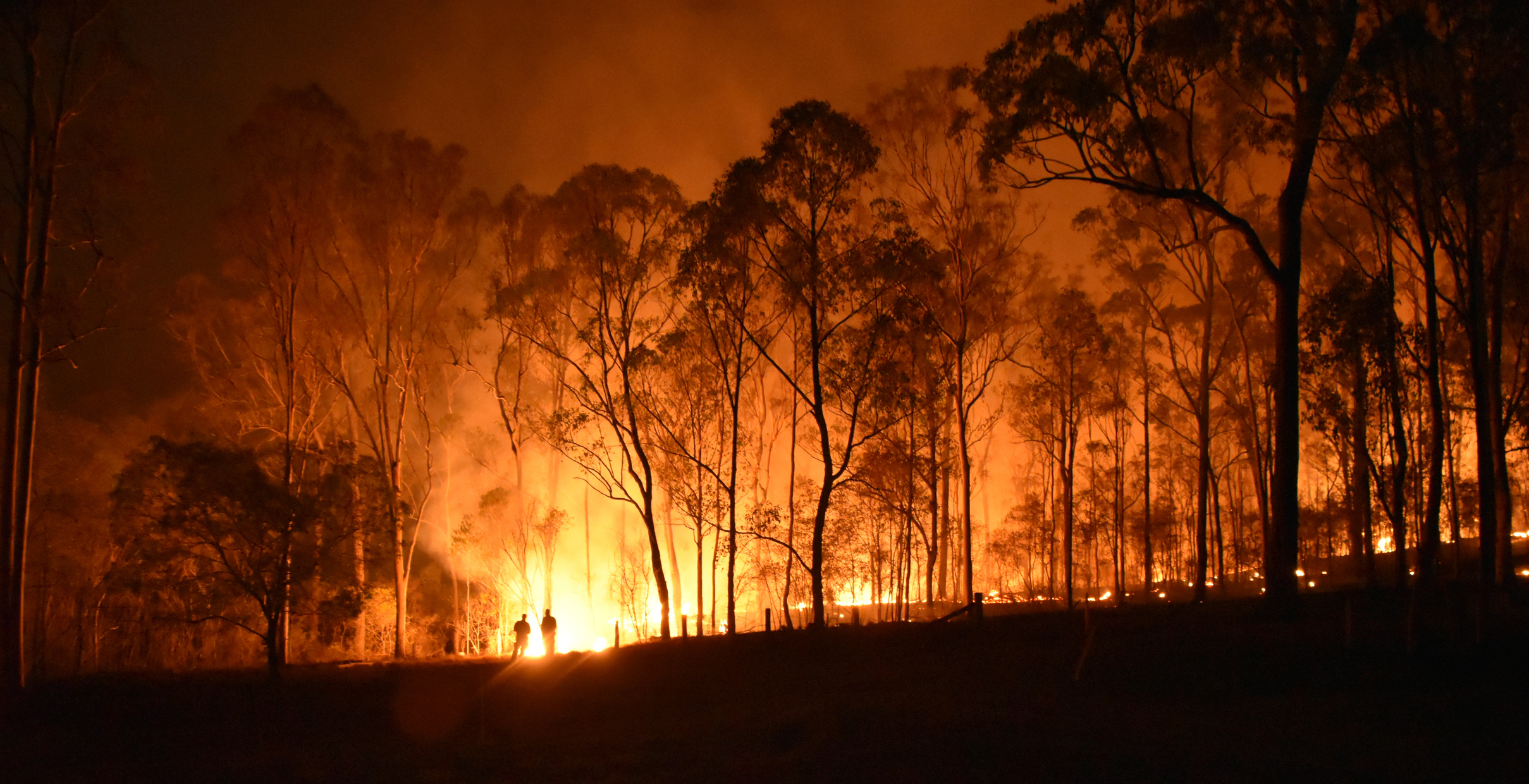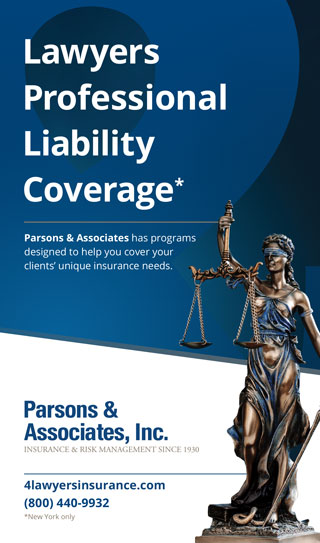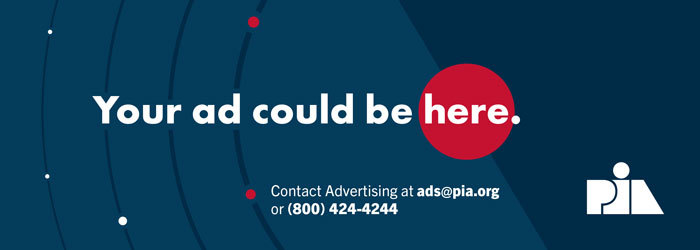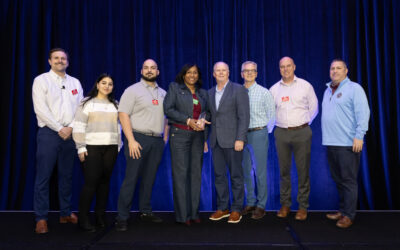Until recently, wildfires followed a seasonal pattern. Primarily, we saw dangerous wildfires spread through the summer and fall months, and then a cooler period during the winter and spring when businesses countrywide would have the opportunity to rebuild and recover. After the unremitting fires from 2017 to today, we now can consider wildfires to be a year-round threat.
Independent agents who want to protect their clients from this threat need to understand wildfire risk and share best practices with clients to mitigate against it.
Recognizing a year-round threat
In February 2024, the Smokehouse Creek Fire devastated large swaths of Texas. The winter fire burned an estimated 1.1 million acres across the state, making it the largest wildfire to ever hit Texas and one of the largest to ever hit the U.S.[1]
Similarly, in December 2017, the Thomas Fire ravaged California. The fire burned over 280,000 acres of land in the area and took down over 1,000 structures.[2] The damages and subsequent mudslides the fire caused led Southern California Edison to pay out roughly $1.2 billion in insurance claims.[3]
Spring and Fall—the more traditional wildfire season—continued to pose a strong threat as well in recent years. In July 2021, the Dixie Fire burned nearly one million acres of California land,[4] cost $637 million to suppress and destroyed nearly 900 buildings.[5] The fire served as a significant setback to small-, medium- and large-sized businesses in the region and it took years to recover fully.
Finally, just last August, the Maui Wildfires led to an estimated $3.08 billion in insurance losses and estimates predict that number to reach around $5 billion.[6] The fires also claimed around 100 lives and the area still is recovering from the damage to infrastructure.[7]
While wildfires may not be as frequent or potent of a threat in the Northeast, they still are important to keep in mind as agents manage clients in high-severity niches. In Massachusetts, the Berkshire Wildland fire in 2021 burned roughly 800 acres and required more than 120 firefighters to subdue.[8] More recently, in 2022, the Bemis Fire in New Hampshire burned more than 100 acres of land.[9]
Without proper preparation businesses in the Northeast also could face severe consequences if they are not adequately prepared when a wildfire ignites. And with the unpredictability of climate change, agents need to keep their clients prepared as wildfire at-risk regions could shift and damage new areas that are not used to managing fire risks.
With devastating wildfires no longer following a seasonal pattern, how can independent agents best assist their clients at risk of wildfire damage?
No. 1: Understand and relay the threat
From 2017 to 2020, wildfires caused $37 billion in insured losses across California alone, affecting homes, farms, ranches, wineries and more. As a specialty program administrator in the winery space, we have seen wildfire devastation firsthand. Many wineries were put out of business by fires that ravaged their expansive properties and destroyed their supply.
Many that are still in business continue to feel the impacts of the past decade of fires. While different businesses face different risks, the lessons learned in the winery industry can serve as a valuable case study for agents to share with their clients to improve risk-mitigation efforts of their own.
Consider these two scenarios and the takeaways they present:
We visited a winery in the Alexander Valley region and performed a thorough risk analysis using our drone imagery, 3D modeling and general walkthrough data. Our analysis found there was a barn and small dwelling on the property that were at a high level of risk. The barn had poor defensible space, large attic eaves and stacks of grape-collecting bins piled next to it, which all make for potent fire fuel.
After the visit, we recommended the winery cut back tree limbs and brush around the barn and dwelling, as well as also replace the ¼” eaves on the dwelling with ⅛” mesh. The goal was for the renovations to protect the building in the event of flying embers caused by a fire.
Later, we learned the winery had not followed all our recommendations. Soon after, the Kincade Fire barreled through the area burning more than 77,000 acres and destroying 374 structures.[10] Strong winds blew embers from the fire into the Alexander Valley. The dwelling quickly caught fire and the convective heat from the building caused the stacks of grape bins to melt and smolder. The bins then ignited, which set the barn on fire. The winery suffered costly losses and shut down for a significant period as it managed the rebuilding efforts.
In a separate instance, we visited a client in Napa Valley and offered recommendations to improve its defensible space. These recommendations included methods to manage the vegetation and brush, and to clear trees. The insured worked with a local arborist to start this process.
When we followed up six months later, we found not all the work had been finished. Upon our reminder, the insured immediately contacted the arborist and had the changes made. In 2020, the Glass Fire tore through Napa Valley, but spared our insured’s property. It only burned around the buildings, but no structures suffered direct damage thanks to the risk-mitigation efforts.
No. 2: Seek out the right partners
Independent agents who want to establish themselves as the best advocate for their clients during wildfire season should take active steps to establish their knowledge base on wildfire mitigation, particularly as it relates to a client’s unique needs. Partnering with the right carrier or program administrator can make a significant difference in helping business owners understand their particular risk exposures and how to best protect against them.
A specialty insurer will know the full range of risks that clients in a certain niche face on a regular basis. For example, in the winery space, independent agents should partner with a winery insurance specialist that understands the right defensible space counsel to provide, how to communicate with winery clients on changes that need to be made to their property and other winery specific technology or resources that clients can utilize to protect themselves from a wildfire.
With that in mind, agents should work to gain a foothold in a particular specialty. In a difficult economic market, specializing can be a strong tactic for growing your book of business and finding new clients.
No. 3: Share your knowledge
A boots-on-the-ground approach continues to be essential in our industry. While technology has made remote risk management more possible than ever before, nothing can replace the value of communicating with a client in person. Visiting a client’s property can highlight critical risk exposures the client may not notice, and it also offer agents the opportunity to ensure their client is insured properly for all structures and inventory on-site. This will reduce the chance of any sticker shock in the event of a loss from a fire.
During these site visits, agents should discuss disaster planning with their clients. All businesses should have a disaster response plan in place, with specific fire response instructions. The plan should include best practices and protocols for how to act in the event of a fire, evacuation routes, how to secure and protect equipment and more. Management also should have a communication plan in place for staff, customers and vendors so everyone can be prepared to move forward in the event of a loss.
Communication and helping a client understand the appropriate safety practices also can make all the difference for a business facing a wildfire. This communication should include discussions on:
Managing defensible space. Controlling vegetation and landscaping in the area surrounding the property will reduce the fire fuel on-site and make it more difficult for it to spread throughout the entire business.
Implementing fire-resistant building materials. Upgrading to fire-resistant roofing, siding and windows can reduce the risk of a structure catching fire significantly. This includes using materials like metal, slate, or tile for roofing and choosing double-paned or tempered glass windows. Replace attic eves and intake mesh with ember grade ⅛” wire.
Creating a fire action plan. Ensure that the business has a comprehensive fire action plan, which includes regular fire drills, clearly marked evacuation routes, and designated meeting points for staff. This plan should be reviewed regularly and updated to accommodate any changes in the business layout
or operations.
Moving forward
Wildfires continue to serve as a significant obstacle to society, as well as the insurance industry. While the threat may not be as catastrophic in the Northeast, agents looking to grow their business and support their clients should know how best to counsel their insureds on wildfire risk mitigation.
Taking the time to understand the full range of threats of a wildfire, working with the right business partners and getting educated in the right safety practices can help agents position themselves as the ideal business partner when difficult times arise.
This article originally appeared in the September 2024 issue of PIA Magazine.
[1] Western Fire Chiefs Association, 2022
[3] Los Angeles Business Journal, 2022
[6] Honolulu Civil Beat, 2024
[7] New York Times, 2024
[10] Courthouse News Service, 2024

Larry Chasin
Larry Chasin is president and CEO of PAK Programs (www.pakprograms.com), which provides insurance programs for wineries, vineyards, breweries, wine & liquor retailers, cideries, meaderies, distilleries, liquor & wine importers and distributors. He can be reached at larryc@pakprograms.com.





